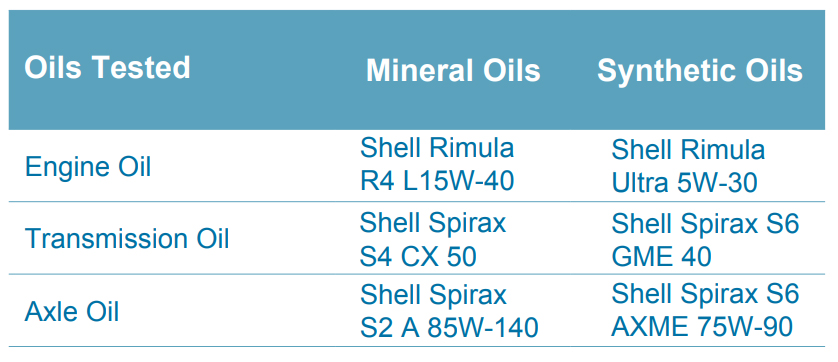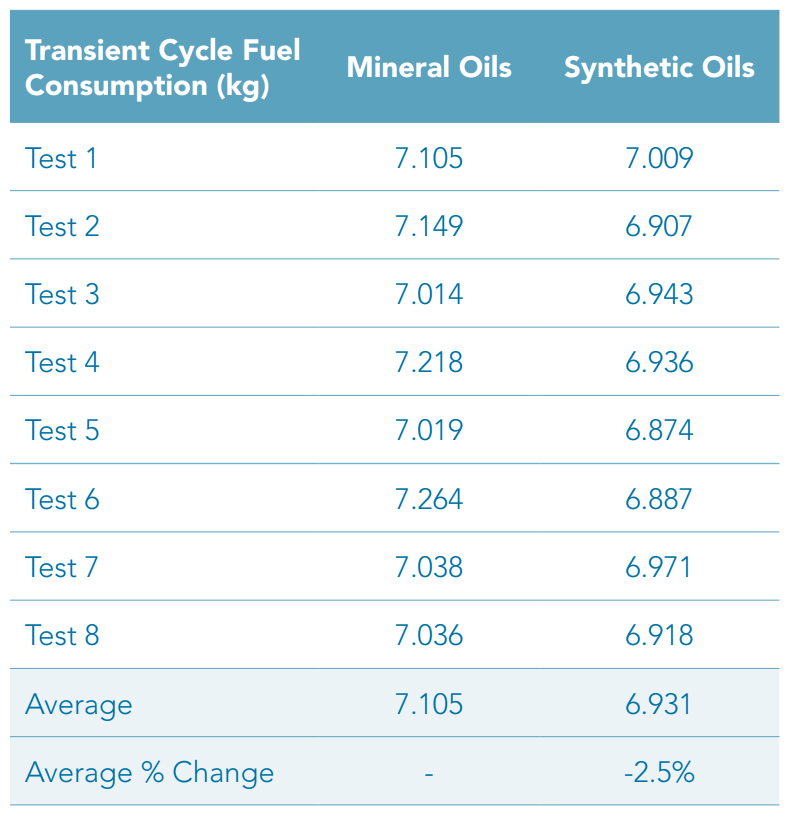The transport industry is continually striving for efficiencies as operating costs increase. For truck fleets of all sizes, a major cost input is for the fuel and lubricants to keep them moving. Taking a leading position in the Australian transport industry, Viva Energy, the licensee of Shell products in this country, set about conducting an extensive research study to identify whether there are direct fuel economy benefits from using synthetic lubricants.

The results were unprecedented and pointed to a potential fuel economy benefit of up to 2.5%, when using Shell Synthetic Lubricant products. The Shell Synthetic Lubricants not only provided the opportunity to deliver potential fuel efficiency improvements, but offer better component protection and reliability over longer oil drain intervals.
While there have been many studies targeting efficiency over the years, most, if not all are conducted in Europe or the USA and have limited relevance to the conditions transport companies face day to day in Australia.
Viva Energy spent months building a credible research model to test the Shell mineral and synthetic transport drivetrain lubricants range, and focused on what would be relevant to transport company owners and decision makers in Australia.
The theory behind the research brief was straight forward, but had some challenges in the application. To perform a series of chassis dynamometer tests on a heavy duty truck to determine whether a fuel consumption benefit can be derived from the replacement of mineral based engine, transmission and axle oils with synthetic alternatives.
“Our Shell Lubricants team devised a wide ranging research study that was totally focused on Australian driving conditions. We took the step to commission the work after highly credible partners were identified to independently oversee the research. As the licensee of Shell products in Australia, the importance of rigorously testing the full range of Transport Lubricants was an important step to allow us to further understand the performance of the Shell Synthetic Lubricants range across a broad range of conditions,” said Paul Smallacombe, Viva Energy’s Product Support Engineer.
Viva Energy worked with Industry specialists who have the track record and equipment in identifying potential fuel efficiency gains. First up, Melbourne based Kangan Institute Automotive Centre of Excellence was engaged to supply the chassis dynamometer together with expertise on the operation of the sophisticated dyno. The transient drive cycle selected provided a representative mix of Australian congested city, urban fringe and highway driving.
Secondly, it was decided that the test should be conducted by a specialist transport research company and ABMARC was chosen. ABMARC is an independent Australian company with a team of highly experienced engineers and research staff who deliver a broad range of services to the transport and energy sectors. ABMARC are specialists in precisely measuring fuel efficiency improvements and have a long history of similar projects in the industry.
“Viva Energy approached ABMARC with a brief to better understand the real-world performance of synthetic lubricants as a contributor to reduced fuel consumption when compared with traditional mineral lubricants,” explained James Payne, the Environment and Technical Services Manager of ABMARC. “The design of the study simulated real world conditions on a heavy vehicle but in a controlled laboratory environment. The fuel measurement technology we used is the only one of its type in Australia and provides the most precise measurements possible. Our test methodology delivered excellent repeatability and statistical significance, which gives Viva Energy high confidence in the results.”
Rather than utilising a brand new low km vehicle, Viva Energy decided to use a representative on highway configuration truck for the testing. A Western Star 5800SS with a Detroit Diesel 14.8L engine with 370,000km on the clock was chosen and the various parties then established the clear parameters for the testing to commence.
A comprehensive testing program consisting of multiple repeats of drive cycles, with the engine warmed was the overall strategy. The drive cycle used in the testing is an Australian based drive cycle, reflecting the driving conditions that a typical truck operator would experience on the road in Australia. It consists of a mix of metro stop-start, outer urban and highway running to reflect actual road conditions.
The impact of changing the lubricants was assessed based on fuel consumption in transient conditions, simulating driving the heavy duty on-highway truck in an Australian environment.
The fuel measurement system was connected to the three fuel lines:
- Fuel flow from tank (at the exit of the pre-filter)
- Fuel flow to the engine (at the entry to the main filter)
- Fuel return from engine (at the tee, leading to the LHS/RHS tanks)
This allowed the net fuel consumption to be measured with a single fuel flow meter, improving test measurement accuracy and repeatability.
To simulate the test vehicle towing a laden trailer and provide the most realistic indication of the fuel consumption in the real world, the maximum inertia possible was simulated by the dynamometer whist minimising tyre slippage on the rollers. The simulated vehicle inertia was 25,000kg. This represents the gross vehicle mass simulated through the testing.
Critical to the testing regime outcomes were the Shell Transport Lubricants used. Test cycles were undertaken with mineral oils and then repeated with synthetics.
Summary of Oils Tested

All lubricants were filled to the dipstick maximum in the case of the engine oil and filled to level via the transmission and axle fill points.
Although the mineral and synthetic lubricants are both approved for use by the engine manufacturer, to limit the effect of carry-over from previous oils used in the Western Star truck, a process was devised for oil changes to remove any chance of cross contamination of the lubricant products as follows:
- Drain previous oils
- Fill to level with fresh oils, replacing engine and transmission oil filters
- Vehicle warm up and flush by driving transient cycle
- Drain oil
- Final fill with fresh oils, replacing engine and transmission oil filters
The first round of tests was conducted with Shell mineral oils then substituted with Shell Synthetic oils. All testing was conducted to the same parameters and conditions by ABMARC at the Kangan Institute Automotive Centre of Excellence.
Sixteen tests (8 mineral, 8 synthetic) were used as the basis for the research conclusions. Based on the drive cycle tests, there was on average a 2.5% reduction in fuel consumption using the Shell Synthetic Technology Oils in the Western Star test vehicle compared to using the mineral based oils. ABMARC’s report confirmed with 95% confidence that this fuel consumption reduction can be attributed to replacing the mineral engine, transmission and rear axle oils with the Shell Synthetic Technology Oils.
The series of testing and monitoring on the chassis dynamometer coupled with the highly sophisticated fuel measurement system utilised for this study has provided new data that is a potential first in testing on Australian driving cycles.
Summary of fuel consumed
The below table summerises the total fuel consumed during each Australian drive cycle using mineral and synthetic lubricants.

“The fuel consumption saving results achieved in the testing were impressive. The Shell Synthetic Lubricants range of products performed faultlessly throughout the testing regime and this research has the potential to offer real substantive benefits to the Australian transport industry,” concluded Paul Smallacombe. “A 2.5% reduction in one of the largest cost components for transport operators is significant.”
For more information about the conditions under which the testing was conducted, refer to our website.
Learn more about how you could save on fuel.
Find out more